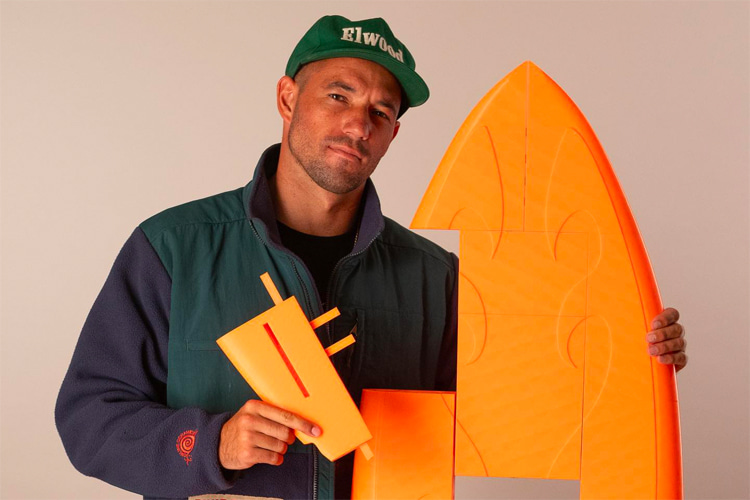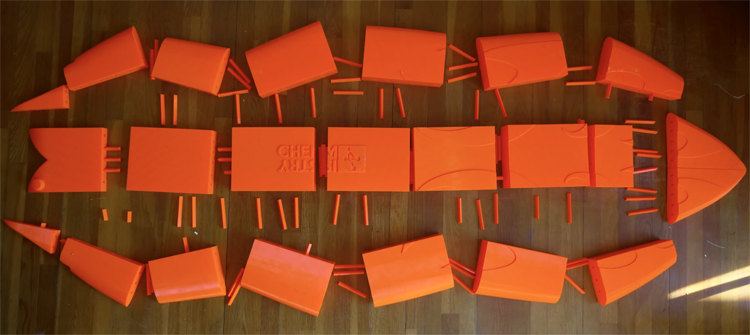The 23-piece 3D-printed surfboard

A professional surfer and mechanical engineer from Oceanside, California, created a 3D-printed neon orange PETG filament-based surfboard featuring 23 small pieces.
Tanner Waite merged his two passions – surfing and engineering – and shaped his homemade twin-fin board using a 3D printer.
3D-printed surfboards are not new. We’ve seen them built with several types of material, including recycled plastics and eco-friendly components like algae.
However, Waite is probably one of the first to develop a Lego-inspired surfboard concept made from 23 small parts connected by dozens of triangle-shaped dowels.
The number of parts used to create the puzzle board was not a choice. Instead, it was a limitation. Waite’s 3D printer bed could not handle larger pieces.
The surfboard is a clone of one of Tanner’s favorite models by Chemistry Surfboards, the Cassette Deck.
It took four months of work and two weeks of non-spot printing all pieces.
The surfer engineer started to build this project by laying the original board on the ground, taking many measurements, and creating a CAB file.
Then, the virtual board was split into 23 pieces as his printer could only do 8x8x8-inch cubes.
All parts are printed at a 6 percent infill, meaning only 6 percent of the volume is plastic.
Then, the components were connected together using the triangle dowels and epoxy resin.
“I spent so many hours editing and trial/error creating this project,” explained Tanner Waite.
The board has so many parts that, at some point, Waite even put the tail on the nose.

3D Surfing
Once completed and approved by his friends at Chemistry Surfboards, the proof of concept was finally ready to hit the water.
When Tanner took it to the beach, he didn’t even know if it was going to float.
He was worried it would break, crack, or fill up with water.
After realizing the 3D-printed surfboard was floating, it was time to see if you could paddle on it.
Yes, it did not disintegrate while paddling out.
After three ridden waves, everything was good. But on the fourth attempt, the board broke into pieces while going for a 360.
Nevertheless, Tanner Waite was stoked and ready to improve his 3D-printed surfboard shape.
“V2 will likely have a very thin hot coat!” assured the 3D surfboard shaper.
One thing is sure: on social media, the feedback on his design featured plenty of valid comments, tips, and suggestions.


